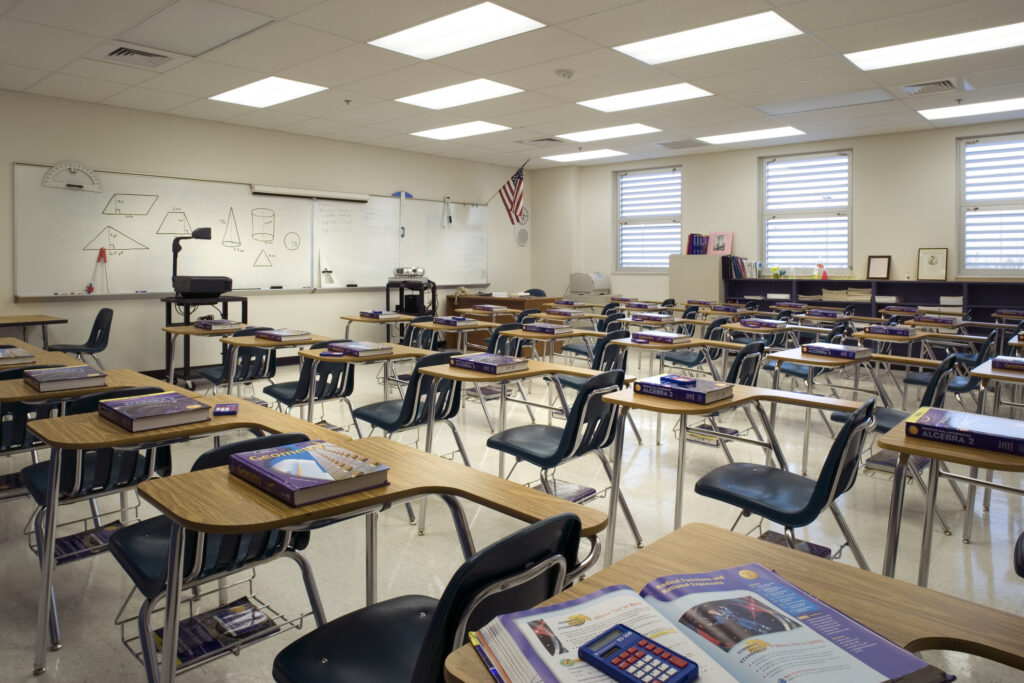
Historically, homeschooling rates in Missouri hovered around 3% — roughly one in 30 students (Getty Images)
Over the past few years, education in Missouri has undergone a quiet but seismic shift. What’s most interesting about this change is that it’s happening outside of schools.
Today, 1 in 16 school-aged children in the state are homeschooled, according to new research by Amy Shelton and myself. That puts the number of children educated outside of traditional public and private schools at 61,000 – an immense increase from pre-pandemic levels.
Historically, homeschooling rates in Missouri hovered around 3 percent — roughly one in 30 students. Our research shows the rate of homeschooling has nearly doubled since the pandemic began. And these numbers may be conservative.
Why is a study needed to count homeschool students? Missouri is one of 20 or so states that either don’t collect or don’t publish official homeschooling counts. While state education agencies meticulously track public school enrollment to allocate billions of dollars in funding, they rarely track private school or homeschool students with the same rigor.
Missouri provides little to no direct funding to private schools or homeschool families, so the lack of detailed data has persisted.
Even in states that require some form of homeschool registration, many students were unaccounted for during and after the pandemic. A previous analysis by the Associated Press and Stanford University found that hundreds of thousands of students nationwide were “missing” from school rosters and student registries after 2020.
For homeschooling families, however, these children aren’t “missing”— they’re at home, receiving education under their parents’ guidance. Often right at the kitchen table, or in the family living room— or perhaps in a virtual school or in a “pod” with other homeschooled children. The definition of homeschooling is changing, too.
There’s no question, the pandemic-era school shutdowns sparked this dramatic shift. All of a sudden, every family had a taste of being their children’s primary educator. The data shows that many parents liked how that felt, and stuck with it years after brick and mortar schools reopened. Also, in the post-pandemic world of remote work, many families — who perhaps were always interested in homeschooling — are now able to make it work.
So why hasn’t data shown these numbers before? Some families, unfamiliar with registration requirements, likely fell through bureaucratic cracks and didn’t show up in official enrollment counts. Others live in states like Missouri, where no registration is required.
Our study fills the gap by synthesizing data from six reliable sources, including federal census data, state education reports, and surveys by the PRiME (Policy Research in Missouri Education) Center at Saint Louis University, where Shelton and I conduct our research. The results paint a consistent picture: Homeschooling in Missouri has reached unprecedented levels.
To put it into perspective, the 61,000 homeschooled students in Missouri today equal the public-school enrollments of the school districts in St. Louis and Kansas City, combined.
In rural areas, homeschoolers now often outnumber private school students.
The question is whether this surge is temporary.
Evidence suggests it’s not.
Nationwide, homeschooling rates spiked during the pandemic. But in Missouri, even after schools reopened for full, in-person learning, homeschooling rates remained steady. Public school enrollment fell from 879,493 in 2019, dropped to 859,166 the following year. Preliminary fall 2024 enrollments show no sign of a rebound. Overall population trends don’t explain this drop; birth rate and census data show no sudden decline in Missouri’s school-age population.
Polling provides further clarity. The U.S. Census Bureau’s Household Pulse Survey and PRiME Center polling consistently estimate Missouri’s homeschool rate at around 6% since 2022. This equates to roughly one in sixteen students, and over time, the share of Missouri children who experience homeschooling at some point could approach one in ten.
There are many opinions about homeschooling, just as there are many ways to homeschool. Regardless of perspective, the facts are undeniable: Homeschooling is no longer a far-and-few situation. It’s a substantial and growing part of Missouri’s educational landscape.
Not long ago, the image of education was familiar and predictable: Students boarding yellow buses or stepping through the doors of red brick buildings.
But in Missouri, that picture has changed. We now know that for tens of thousands of families, school is happening right at home. Love it or hate it, this appears to be a permanent change in the Missouri education landscape.

